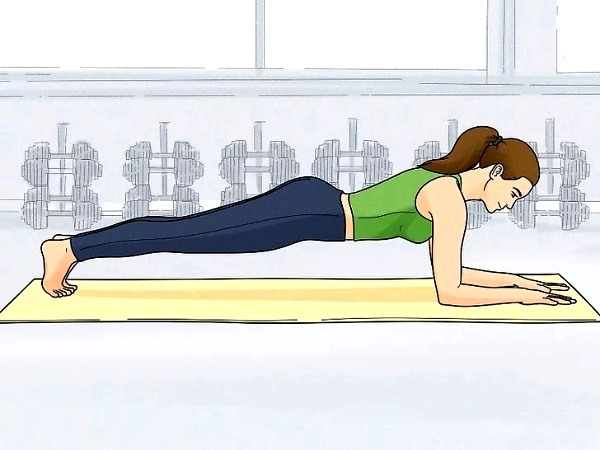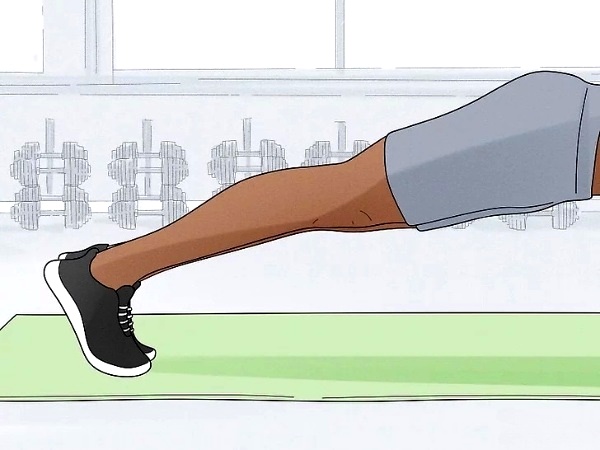Mastering the Plank: Tips to Extend Your Hold Time and Boost Core Strength

Planking is a fundamental exercise that targets your core, enhances stability, and improves overall strength. Whether you’re a fitness novice or a seasoned athlete, mastering the plank can take your workouts to the next level. In this guide, we’ll explore the benefits of planking, proper form, and tips to help you hold your plank longer while boosting your core strength.
Finding Your Plank Sweet Spot: Ideal Hold Times for Best Results

- Start by aiming for planking intervals of 10 to 30 seconds. Initially, you may find yourself only able to sustain the plank for 5 to 10 seconds, which is perfectly normal. As your strength improves and your body becomes accustomed to the posture, gradually increase the duration of your holds.

- Limit your plank hold to a maximum of 2 minutes. Fitness experts suggest that beyond this threshold, you’ve already maximized the benefits of the plank exercise. Achieving a steady 2-minute plank indicates effective muscle building and calorie burning, aiding you in reaching your fitness objectives.
- For a core strength challenge, try lying on a Bosu Ball with your tailbone centered on it. Maintain your entire body suspended parallel to the ground. If you struggle to sustain this position for at least 10 seconds, it indicates a need for further core strengthening.
Perfecting Your Plank: Step-by-Step Guide to Proper Form

Maintain balance by supporting your body weight on your forearms and toes:
- Begin by lying face down, positioning your forearms under your shoulders. Ensure your elbows are aligned directly beneath your shoulders, palms facing down. Engage your core and lift your body onto your toes, keeping your hips and abdomen elevated off the floor. Contract your leg muscles and glutes to maintain a straight alignment from head to heels.
- Effective plank holding relies on proper alignment. If you find yourself arching your back or lifting your buttocks, it’s essential to lower yourself down and rest.
What's the ideal plank repetition count?

Attempt completing 1 to 6 repetitions daily:
- Initially, you might manage just one plank session each day, and that’s completely acceptable! As your strength improves, gradually increase the number of sessions to 2, then 3, and beyond.
- If executing all 6 planks consecutively seems challenging, it’s alright. Spreading them out throughout the day may make it more manageable.
Absolutely, particularly for beginners!
Thirty seconds presents an excellent starting point for plank duration, especially if you’re new to the exercise. If hitting the 30-second mark seems challenging initially, don’t worry—persevere and keep attempting until you reach it.
What are the effects of doing planks daily?

Regular plank exercises will enhance your core strength:
- Engaging in planks provides a comprehensive workout for your entire body, focusing on both your abdominal muscles and core. Consistent daily practice of planks is likely to result in noticeable improvements in your core strength, aiding in better balance and maintaining proper form throughout various exercises.

You’ll also build stronger legs:
In the plank position, your glutes, quads, and hamstrings are engaged and getting a workout. For maximum benefit, make sure to squeeze your legs tightly while holding the plank.
Does the plank become easier over time?

Yes, the plank becomes easier with practice:
- Initially, you might feel shaky or weak while holding the position. Keep squeezing your legs and abs, and gradually increase the duration each time you plank.
- If you’re having trouble maintaining the plank, keep your arms in position but lower your knees to the ground. This modification still engages your abs and core while reducing the strain on your legs.
Are planks considered cardiovascular or strength exercises?

Planks primarily focus on building strength:
- Since you’re maintaining a static position and engaging your muscles throughout, the emphasis is on developing muscular strength. To incorporate some cardiovascular elements into your plank routine, consider variations such as hip touches or up and down planks.
- Hip touches: Begin in a standard plank position, ensuring your body forms a straight line. Gradually tilt your right hip downward, lifting your left hip upward, while maintaining the straight alignment. Gently touch your right hip to the floor, then repeat the motion with your left hip.
- Up and downs: Start in a plank position with your forearms resting on the ground. Push up with your right hand, extending your arm fully, followed by your left hand. Lower back down to your right forearm, then your left, maintaining a straight body line throughout the movement. Keep your core engaged throughout.


